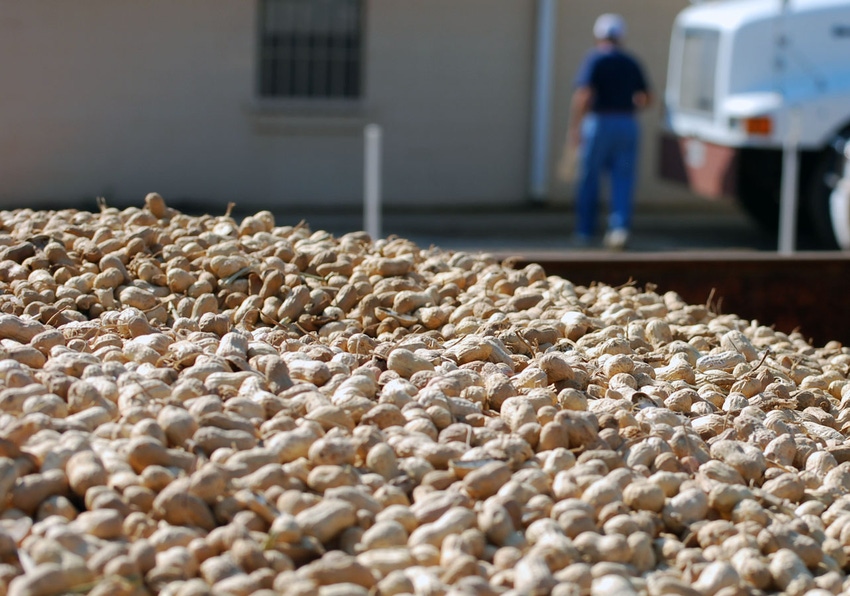
In recent years, the U.S. peanut industry has significantly increased the volume of peanuts its exported overseas, which is a good trend. But the dollar value of that expansion is declining, and that's a bad trend.
"We really have a crisis with exports; not because we have not been successful in opening up international markets, which we successfully have, but because of the challenges we have with aflatoxin domestically and a lot of the challenges with the non-tariff trade barriers in our key high-value markets. We need to be able to regain access and grow our high-value export markets," said Karl Zimmer, the CEO of the grower-owned Premium Peanut in Douglas, Ga., and co-chair of the American Peanut Council Aflatoxin Task Force.
Back in September we reported on the mobilization of the aflatoxin task force. During the American Peanut Shellers Association's spring conference in March, Zimmer gave an update on the initiative, which includes participation from all segments of the industry. It's a complicated issue with several moving parts. This article provides an overview of his presentation.
Zimmer began with some eye-catching numbers.
In 2018, the U.S. exported 493,000 metric tons. Last year, it exported 668,000 metric tons. Converted to farmer stock peanuts that's a 23% increase, or looking at shelled and in-shell peanuts, it's a 37% increase. A success either way, he said, but looking from a different angle takes the shine of the accomplishment.
Pricing in some key markets has remained stable for U.S. peanuts, he said. But based on publicly available USDA data, the per pound value of recent exports has declined from 63 cents per pound in 2018 to 52 cents per pound in 2020.
"If you take that decline in value of price per pound of peanuts and peanut products we've gotten over the past three years, that is an opportunity cost of $170 million or $50 per ton annually," he said. "It's important for us to export product as U.S. peanut industry and U.S. growers become more productive with yield increases, but ultimately we also need to get paid for it, and we're not getting paid."
Peanut aflatoxin threshold
To move forward toward equitable payment, the U.S. peanut industry must handle its aflatoxin issue, address burdensome, retaliatory tariffs and non-tariff trade barriers, and do this while avoiding additional costly regulatory hurdles. That's a challenge.
The USDA science-backed threshold for aflatoxin in shelled peanuts is 15 parts per billion or less. A third of the U.S. peanut lots sampled in 2019 failed that standard. The biggest failure rate in recent memory. The 2019 crop faced severe weather conditions which led to the aflatoxin increase. Roughly 20% of the 2010 and 2011 crops failed the standard, too. Most domestic customers require tighter specs of no more than 12ppb or even 8ppb.
Abroad, major, higher-value markets have tightened their aflatoxin standards, resulting in trade challenges for U.S. peanuts entering places such as Japan, which has a standard of 10ppb, and the European Union, which has an aflatoxin standard of 4ppb. Last fall, the E.U. also slapped a 25% tariff on U.S. in-shell peanuts, peanut kernels and peanut oil entering the region, a retaliation against U.S. subsidies of Boeing and Airbus.
Tightening restrictions on maximum residue limits, or MRLs, which are the maximum amount of a pesticide allowed to remain in or on a food, are also non-tariff trade barriers in some high-value markets, he said.
Unfair barriers to the peanut industry
"The U.S. peanut industry is proud of the quality of its product and has the science and data to prove that it is high in quality, safe and nutritious. These new restrictions and regulations, many of which are not backed by science, will not make the food supply any safer, while creating additional and unfair barriers to the peanut industry," he said.
The U.S. peanut industry is taking multiple avenues, coordinating with USDA and the Office of the U.S. Trade Representative, to engage with the EU and soundly address the trade hurdles, but so far it's been a slow go.
The U.S. Codex Office is sponsoring a public meeting April 12 of the Codex Alimentarius, or the “Food Code." It is the preeminent international food standards-setting body. At that meeting, he said, there will be a proposal to establish a ready-to-eat aflatoxin standard of 10 parts per billion for peanuts globally. The American Peanut Council will challenge that standard.
"Not because we're afraid of competing against fair standards, but because we do not believe the science and the data supports a global codex ready-to-eat standard on aflatoxin," he said.
The reality of today's global peanut market is customers now have other reliable sources for high-quality peanuts in countries other than the U.S., he said.
"For too long, we've responded to actions that others have taken. We need to become more aggressive in handling and dealing with these issues. We're working to get everyone aligned, to get everyone working together," he said, "increasing the conversations with industry partners and researchers on how to solve this issue that we've been facing for many years."
The peanut industry requested, and Congress approved $1.5 million for aflatoxin research to be coordinated by the USDA National Peanut Lab in Dawson, Ga. Zimmer said that is welcomed funding, but much more will be needed on many levels.
"The loss of high value export markets impacts every segment of this industry," he said. "We need to look at how we align the incentives around it and make sure that we're taking the right actions and the right steps at every stage of the supply chain to make this work and prevent impacts from aflatoxin," he said.
About the Author(s)
You May Also Like






